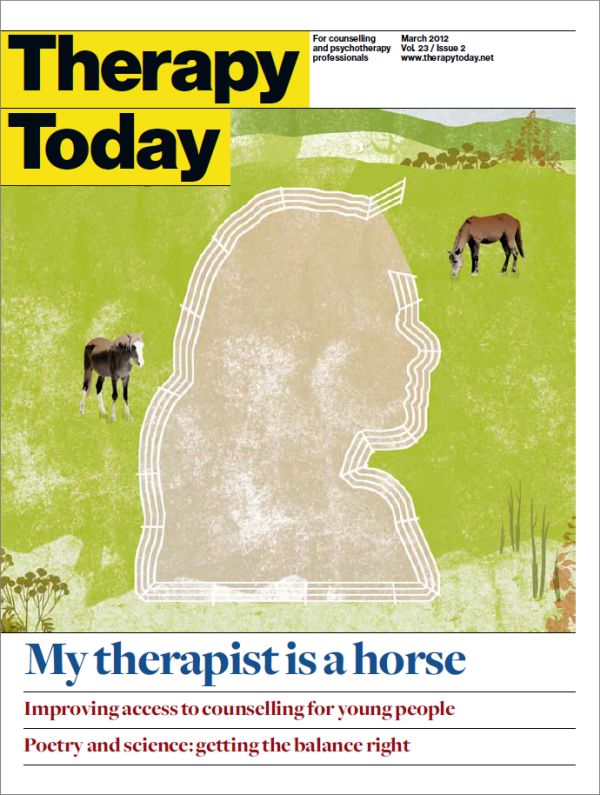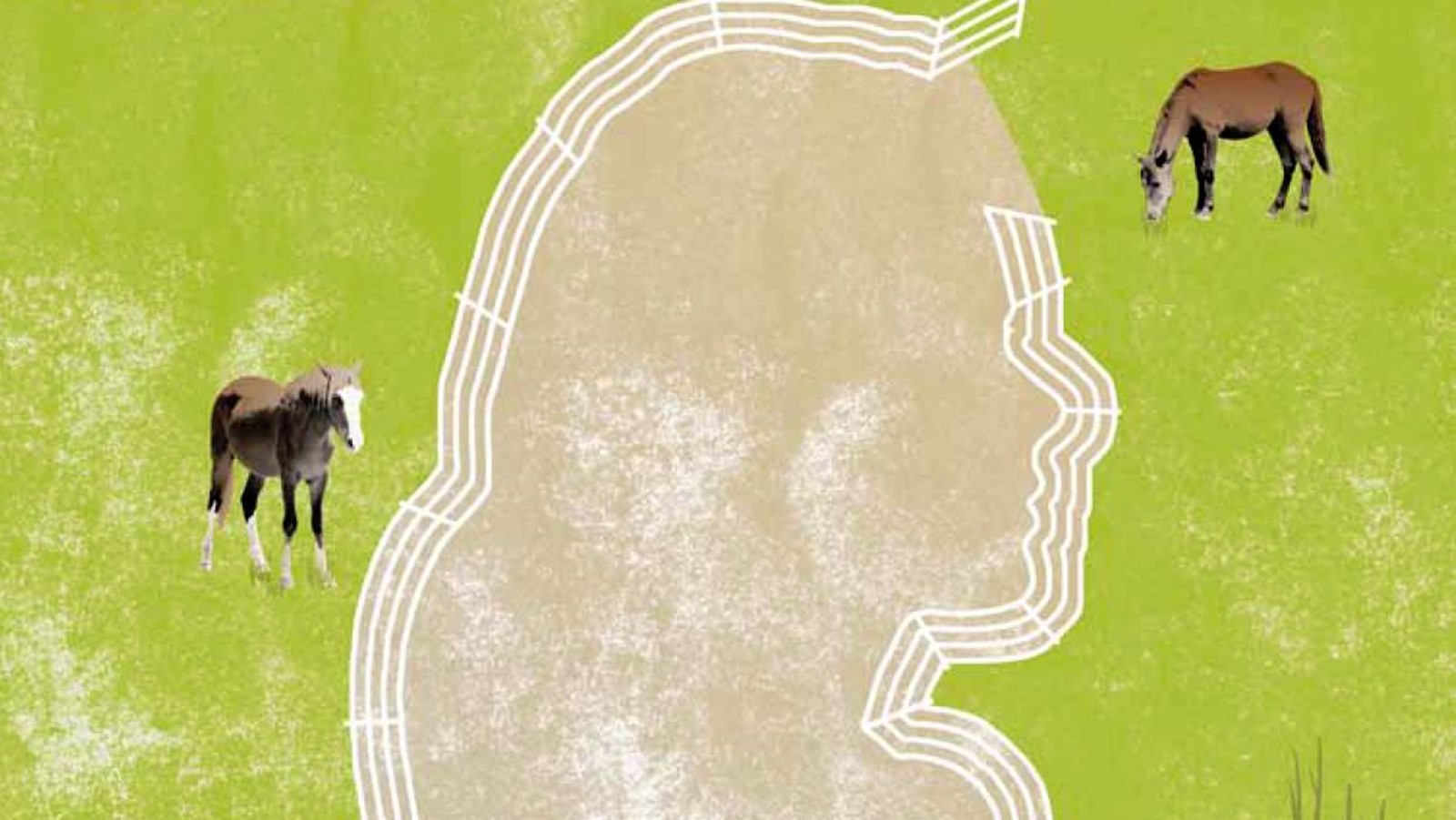In this issue
Features
When the therapist is a horse
Nicola Banning reflects on her own, revelatory experience of a two-day equine facilitated therapy group.
Poetry, please
Therapy should bring the poetic and the scientific together to reflect and articulate the experience of the client, argues Sarah Van Gogh.
Too little, too late?
People infected with hepatitis C from NHS blood will at last get counselling. Charles Gore explains the history behind the decision.
The Leicester Conference experience
Participants from a wide range of organisations and nations meet to explore group relations. Mannie Sher and Coreene Archer describe what happens at the Leicester Conference.
Regulars
News feature
What do young people want?
The Department of Health has recently announced further investment to improve access to talking therapies for children and young people. Catherine Jackson talks to researchers and practitioners about what’s being offered.
Talking point
Mèlani Halacre: All stick and no carrot
In the client’s chair
Caitin Wishart: Who is this man?
In training
Marc Brammer: Back in the client's chair
In practice
Julia Bueno: Friend or therapist
Questionnaire
John McLeod
Dilemmas
Disclosures in cyberspace
Day in the life
Maria-Alicia Ferrera-Pena: A space for sadness
Letters
BACP
From the chair
Amanda Hawkins: The long route to registration

Articles from this issue are not yet available online. Members and subscribers can download the pdf from the Therapy Today archive.
Editorial
Up and down the country horses are being used to work therapeutically with a range of conditions – addiction, depression, PTSD and even autism. Equine assisted therapy is booming, partly perhaps because of the increase of this therapy in the US. In 2011 the US-based Equine Assisted Growth and Learning Association (EAGALA) trained 1500 therapists in the UK.
A quick google search reveals the popularity of animal assisted therapy in general. I came across several counselling services offering therapy with guinea pigs, chickens, cats and even pigs! The benefits of such therapy are claimed to arise from the fact that animals are responsive, live in the here-and-now and offer unconditional acceptance. Equine therapists say that horses also mirror back our emotions to us – they know what we are feeling even if we don’t. Some of the best results reported for equine assisted therapy have been with teenagers with serious behavioural problems; for the first time in their lives some of these young clients have felt an authentic relationship with another being – a relationship about contact and connection instead of manipulation and abuse.
Counsellor and BACP member Nicola Banning enrolled in an equine facilitated therapy group to explore power relations in her client work, in her training with groups and her work with organisations. She shares her discoveries in this issue.
We also report on the latest developments in children and young people’s (CYP) IAPT. The Government recently announced an extra £22 million to broaden the range of therapies on offer to young people and to help develop a curriculum for counselling in schools, a project with which BACP is closely involved. The aims of CYP IAPT are described by one interviewee as ‘genuinely radical’ as they will dramatically change the culture of CAMHS. And while acknowledging the need for pluralism – though perhaps not extending to equine therapy just yet – a clinical psychologist describes how young people often like the formulation process of CBT because it’s like detective work.
Sarah Browne
Editor
